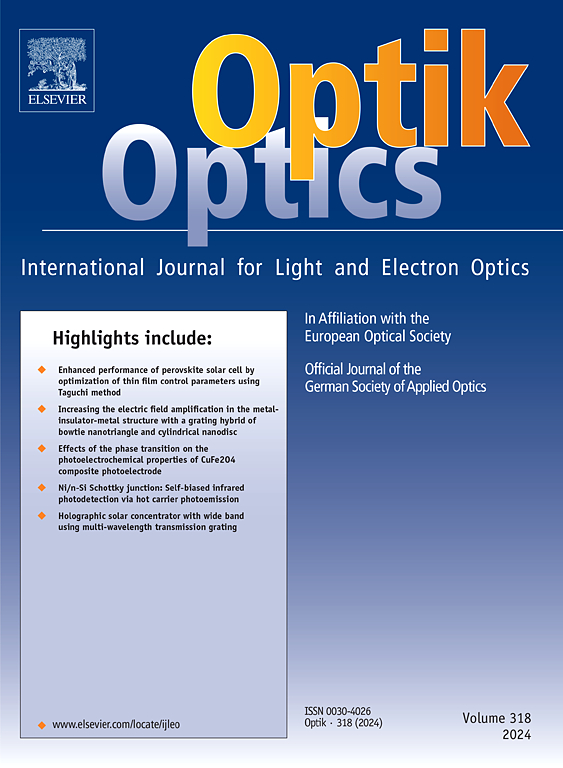基于二极管激光的广谱固态照明与可见光通信
IF 3.1
3区 物理与天体物理
Q2 Engineering
引用次数: 0
摘要
由于在室内长时间使用屏幕造成的健康问题日益严重,因此需要模仿自然阳光的人工照明来支持抗衰老、提高工作效率、调节睡眠模式和确保安全通信。本研究利用无机黄、绿、红和深红荧光粉组合,开发了一种经济高效的激光驱动固态照明光源。宽光谱激光光源(BSLS)具有明显的优势,特别是色纯度高(76.8 % ± 0.5 %)、显色指数高(96 ± 0.5 %),色域比三原色光源提高了 200 %。与传统白光 LED 等窄带光源相比,BSLS 的蓝光危害降低了 91.4 ± 2.5%。同时,利用 BSLS 进行可见光通信的可行性表明,基带信号的数据传输率可达 20 kbps。这为具有实时通信功能的健康友好型照明光源提供了全面指导。详细介绍了使用 BSLS 设计的链路的相关和非相关噪声因素,如抖动(时间误差)和干扰、品质因数、消光比以及上升和下降时间。本文章由计算机程序翻译,如有差异,请以英文原文为准。
Diode laser-based broad spectrum solid-state lighting and visible light communication
In response to the growing health issues linked to prolonged screen time in indoor settings, there is a need for artificial lighting that mimics natural sunlight to support anti-aging, enhance work productivity, regulate sleep patterns, and ensure secure communication. This study presents the development of a cost-effective, laser-driven solid-state lighting source utilizing a combination of inorganic yellow, green, red, and deep-red phosphor. The broad-spectrum laser source (BSLS) shows distinct advantages, particularly high color purity (76.8 % ± 0.5 %), high color rendering index (96 ± 0.5 %), and a 200 % enhancement in color gamut compared to the primary tri-colors. BSLS demonstrates a 91.4 ± 2.5 % reduction in blue light hazard relative to a narrow band source, such as conventional white LED. Simultaneously, the feasibility of visible light communication utilizing BSLS demonstrates a data rate of up to 20 kbps for baseband signals. A comprehensive guidance on health-friendly illumination source with real-time communication features is provided. The correlated and uncorrelated noise factors, such as jitter (time-error) and interference, quality factor, extinction ratio, and rise and fall time of the link designed using BSLS, are presented in detail.
求助全文
通过发布文献求助,成功后即可免费获取论文全文。
去求助
来源期刊

Optik
物理-光学
CiteScore
6.90
自引率
12.90%
发文量
1471
审稿时长
46 days
期刊介绍:
Optik publishes articles on all subjects related to light and electron optics and offers a survey on the state of research and technical development within the following fields:
Optics:
-Optics design, geometrical and beam optics, wave optics-
Optical and micro-optical components, diffractive optics, devices and systems-
Photoelectric and optoelectronic devices-
Optical properties of materials, nonlinear optics, wave propagation and transmission in homogeneous and inhomogeneous materials-
Information optics, image formation and processing, holographic techniques, microscopes and spectrometer techniques, and image analysis-
Optical testing and measuring techniques-
Optical communication and computing-
Physiological optics-
As well as other related topics.
 求助内容:
求助内容: 应助结果提醒方式:
应助结果提醒方式:


